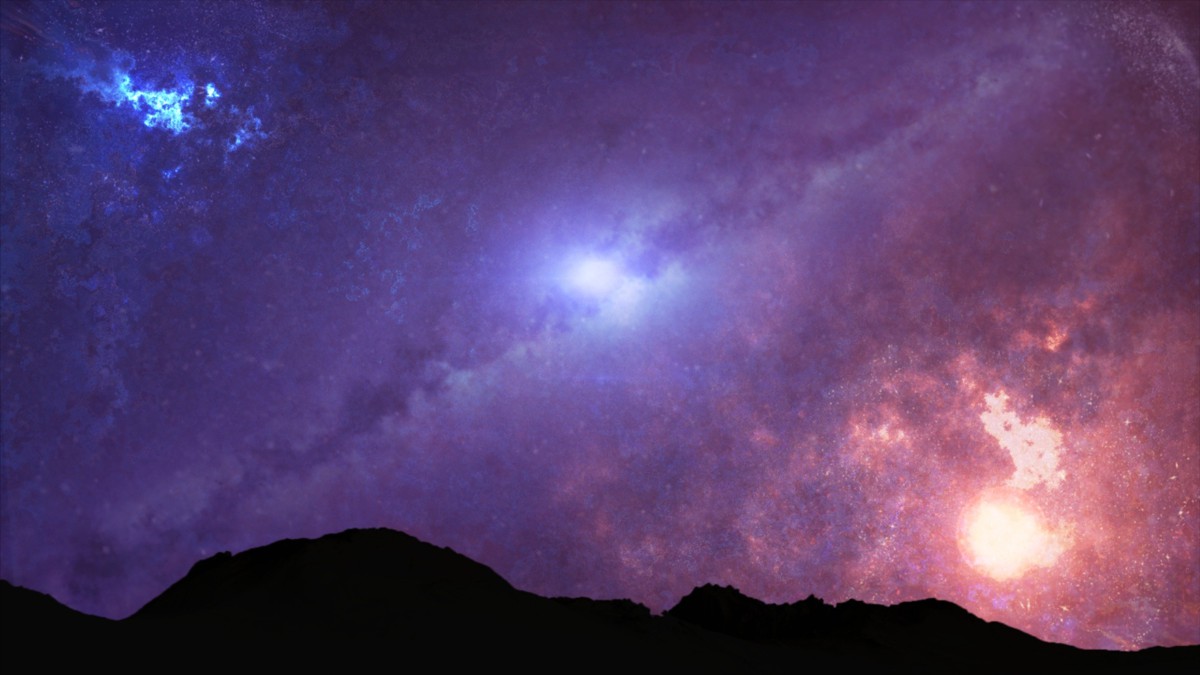The characteristics of the universe in which we evolve depend on about fifteen physical constants. In the current absence of a unifying principle, they are considered independent of each other. The advent of supercomputers allowed astrophysics to model the development of the universe and then modify these constants one by one or all at once to simulate new universes (“toy universes”). The number of toy universes thus obtained is almost infinite.
Some of these simulations have shown that almost all toy universes resulting from these simulations are sterile. According to these simulations, only a hyper-fine adjustment of the 15 basic constants allows the appearance of the stable and viable universe in which we are. Proponents of the anthropic principle refuse to see it as a simple “fortunate coincidence”, which would be credible if it concerned only the adjustment of a single constant, but impossible on that of 15 independent constants.
Other simulations, such as the MonkeyGod program by Victor J. Stenger, arrive at different results: out of 10,000 simulated universes by varying randomly and simultaneously several physical parameters, over 10 orders of magnitude, this program obtains 61% of universes where the lifespan of stars and their composition allows the appearance of life. According to Stenger, these different results are due to the fact that the simulations leading to the conclusion of a fine adjustment vary each parameter one by one in leaving the others fixed, a variation that the change of other physical parameters cannot compensate for to generate a viable universe.
Some examples of universe constants that raise questions about their fine-tuning:
Density of the universe and speed of expansion
Barrow and Tipler showed that the expansion of the Universe is neither too fast nor too slow. In a less dense universe, expansion would have prevailed over gravitation and no structure could have formed (no stars, no planets, no galaxies). A denser universe would have collapsed on itself too quickly to allow complexity to develop. The density of the Universe is very close to the critical density which gives this reasonable expansion and a lifetime of the Universe compatible with the appearance of life. The ratio between the density of the Universe and the critical density is the density parameter Ω, equal to 1 for the critical density.
The problem is that if Ω is significantly different from 1, lower or higher, this value is not stable and diverges. That is, if Ω > 1, the expansion of the universe will slow down and reverse, and Ω will tend to infinity; if Ω < 1, the expansion of the universe will continue to infinity and Ω will tend towards 0. As the value of Ω diverges, it must have been, during the Big Bang, in a range of values extremely thin around 1 so that, 13 billion years later, in our time, it is still quite close to 1.
This range of values is an interval of ±10-60 around 1. This interval is so small that Trinh Xuan Thuan calculated that it corresponds to the probability for an archer to hit a 1 cm2 target located at the other end of the universe by blindly shooting a single arrow from the Earth without knowing in which direction the target is.
According to most scientists, this problem is solved by the cosmic inflation that took place right after the Big Bang. This period of inflation has the effect of flattening a random spatial curvature of the Universe at the time of the Big Bang, to make it almost flat. However, a flat curvature corresponds — by definition — to a density of the Universe equal to the critical density. So it is logical and natural, if the model of cosmic inflation is correct, that the parameter Ω was almost equal to 1 at the beginning of the Universe. The inflation model is currently well accepted by the scientific community, having notably led to verified and measured predictions about the fluctuations of the cosmic microwave background.
The masses of the neutron and proton
The mass of the neutron is a little larger than that of the proton: mn − mp = 1,29 Me V. This leads to the rapid decay of the (free) neutron into a proton, whereas the proton is very stable (its lifetime is at least 1034 years). If it were the reverse (mn − mp < 0 ), it would be the proton that would decay into a neutron (which would be stable) and nuclear fusion reactions would be based on neutrons, which would form bare nuclei of all masses. The only material in the Universe would then be neutronium, chemical elements could not form and life could not develop.
Also, neutrons inside an atomic nucleus do not decay (aside from beta radioactivity), ensuring the stability of atomic nuclei. For this to be the case, the binding energy El must be greater than the difference in mass between a neutron and the added mass of a proton and an electron (El > mn − (mp + me)). This gives another, upper limit to mn − mp, of the order of 10 MeV.
Finally, another phenomenon can compromise the stability of protons: if mn − mp < me + mν (mν being the mass of a neutrino), the protons would decay in reaction with an electron into a neutron and a neutrino. This gives a lower bound of 0,511 MeV at mn − mp.
To summarize, the mass difference between a proton and a neutron must be in the range 0,511 MeV < mn − mp < 10 MeV.
The actual value of 1,29 MeV is well within this range which is quite wide; the value could be double or even quintuple. According to the standard model of particle physics (including the electroweak Higgs field) neutrons and protons get their mass from the strong interaction which makes no difference between these two particles: as a first approximation, according to this theory, neutrons and the protons have equal mass.
If we take into account the electroweak interaction between these particles, we obtain by theoretical calculations a mass difference between 1 and 4 MeV (the mass of the u quark is poorly known giving this range), compatible with the real value. This mass difference is therefore explained within the framework of current physics, and does not need to be adjusted to a very fine range of values.
(Includes texts from Wikipedia translated and adapted by Nicolae Sfetcu)













Leave a Reply